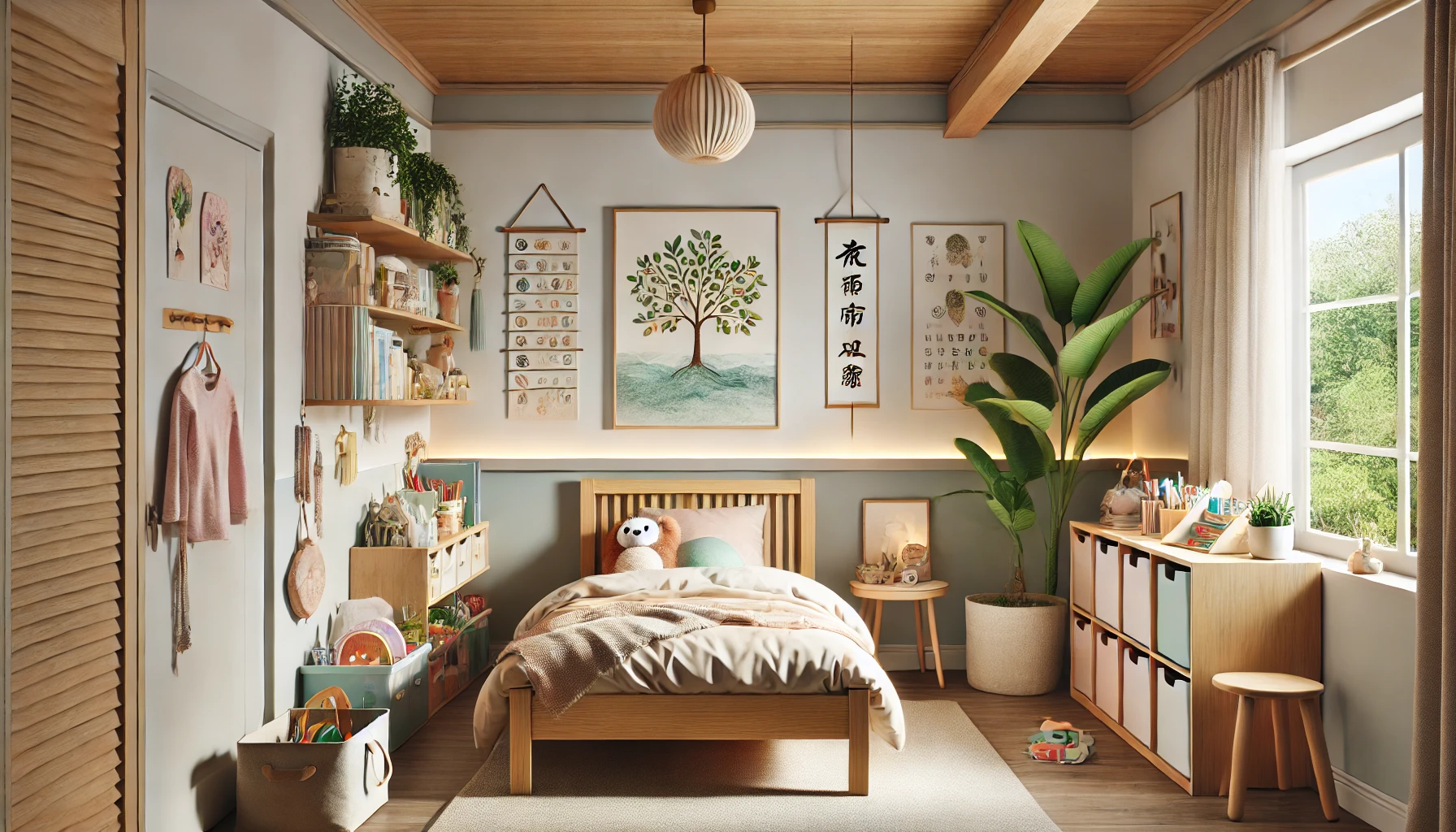How to Use Feng Shui to Support Children’s Growth and Well-Being
Children thrive in environments that feel safe, balanced, and full of nurturing energy. Feng Shui provides powerful yet simple tools to help create a space where kids can rest, play, learn, and grow emotionally and physically. Whether designing a nursery, a playroom, or a child’s bedroom, intentional Feng Shui choices can boost calm, creativity, and confidence.
Here’s how to use Feng Shui to support children’s growth and well-being at home.
1. Focus on the Creativity & Children Area (West)
In the Feng Shui Bagua map, the West sector of the home governs children, joy, and creativity.
- Identify the West area of your home or each child’s bedroom
- Keep this zone clutter-free, playful, and inspiring
- Decorate with white, silver, pastel, or metal accents
- Include toys, books, and creative supplies organized neatly
A balanced West zone supports healthy expression and development.
2. Create a Room That Balances Play and Rest
Children need both stimulation and calm.
- Use bright, happy colors (like yellow, soft orange, light green) for energy
- Balance with cooler tones (soft blue, pale gray, white) for relaxation
- Define zones: one area for rest, one for play, and one for study or creativity
- Use rugs, curtains, or furniture to separate these functions visually
Zoned spaces help children regulate activity and energy.
3. Choose Natural Materials and Soft Textures
Children are sensitive to materials.
- Use natural fabrics like cotton, wool, and linen for bedding and curtains
- Avoid plastic-heavy decor when possible—opt for wood, bamboo, or fabric toys
- Include plush rugs, floor cushions, and soft lighting
- Provide places where children can feel cozy and safe
Comfortable textures help regulate nervous systems.
4. Keep the Bed in a Supportive Position
Bed placement affects how well a child rests.
- Place the bed so your child can see the door, but avoid direct alignment with it
- Use a solid headboard and avoid placing the bed under a window
- Ensure the space under the bed is clear or used only for soft storage
- Decorate with gentle bedding and calming colors
A well-positioned bed fosters restful sleep and emotional security.
5. Incorporate Symbols of Joy and Growth
The room should feel light, hopeful, and inspiring.
- Hang positive artwork—images of nature, animals, or uplifting scenes
- Include educational posters or affirmations (e.g., “You are loved,” “You can do great things”)
- Display your child’s artwork or creations proudly
- Keep visuals age-appropriate and gently stimulating
What children see shapes their beliefs about themselves and the world.
6. Allow for Personalization and Autonomy
Let the child feel ownership of their space.
- Let them choose bedding, decor, or a favorite color theme (with guidance)
- Provide accessible shelves or bins so they can organize toys or books
- Add a small table or floor cushion where they can play or think independently
- Involve them in tidying—Feng Shui is about mutual respect with the environment
Empowered kids are more confident and engaged.
7. Keep the Space Organized and Clutter-Free
A tidy room supports emotional and mental clarity.
- Use labeled baskets, bins, and drawers for easy cleanup
- Rotate toys and books to avoid overstimulation
- Establish a clean-up ritual—especially before bedtime
- Avoid overloading the room with too many toys or decorations
Simplicity creates emotional space for joy and calm.
8. Use Lighting to Match Activity Levels
Lighting sets the energetic tone.
- Use natural light during the day to promote alertness and cheer
- In the evening, transition to warm, soft lighting to signal rest
- Use string lights, salt lamps, or nightlights for coziness and security
- Avoid bright, harsh overhead lights in the evening
Lighting rhythm helps regulate sleep and attention.
9. Add Plants or Nature Elements
Connection with nature supports emotional resilience.
- Use safe, non-toxic plants like spider plant or parlor palm
- Place images of nature, animals, or the sky in the room
- Decorate with natural materials: wood, wool, pebbles, shells
- Keep windows clean and open them often to refresh energy
Even small nature touches can soothe and ground children.
10. Provide Space for Creative Expression
Creative energy is essential for healthy development.
- Set up a small art station, reading nook, or building corner
- Stock it with safe materials: crayons, paper, blocks, craft supplies
- Let the space be open-ended, not overly structured
- Celebrate their creations and change displays regularly
Creativity boosts self-esteem and emotional intelligence.
11. Reduce Electronic Overload
Technology is stimulating—but needs limits.
- Avoid placing TVs or tablets in the bedroom
- Designate a separate area for screen time, if used
- Use books, toys, nature, and family rituals to replace screen-based entertainment
- Keep the sleep zone as screen-free as possible
Protecting a child’s energy includes protecting their senses.
12. Refresh and Evolve the Space as They Grow
Children’s needs change—and their space should too.
- Check in every few months: is the space still working for them?
- Update colors, artwork, or furniture as they enter new phases
- Let the room reflect their growing identity
- Keep it flexible and supportive for who they’re becoming
Your home should grow with your child.
Final Thoughts: A Child’s Room is a Reflection of Love
With Feng Shui, your child’s space becomes more than a bedroom—it becomes a reflection of care, creativity, and trust. It tells your child: “You are safe here. You are seen. You are supported.”
Design the space not just for sleep and play—but for thriving.
